Impacts of Emergencies and Disasters on People with Disabilities _review
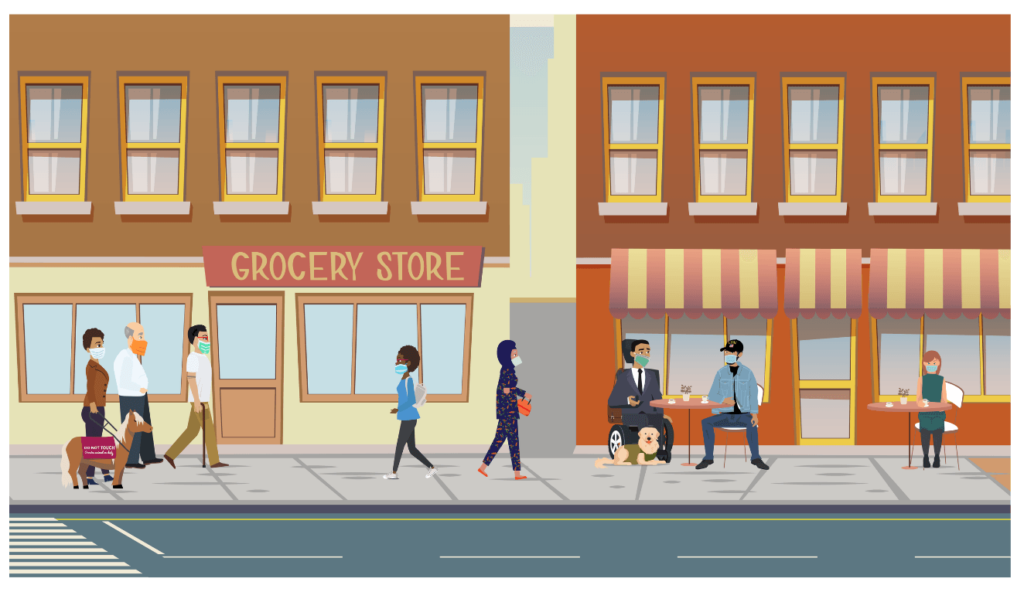
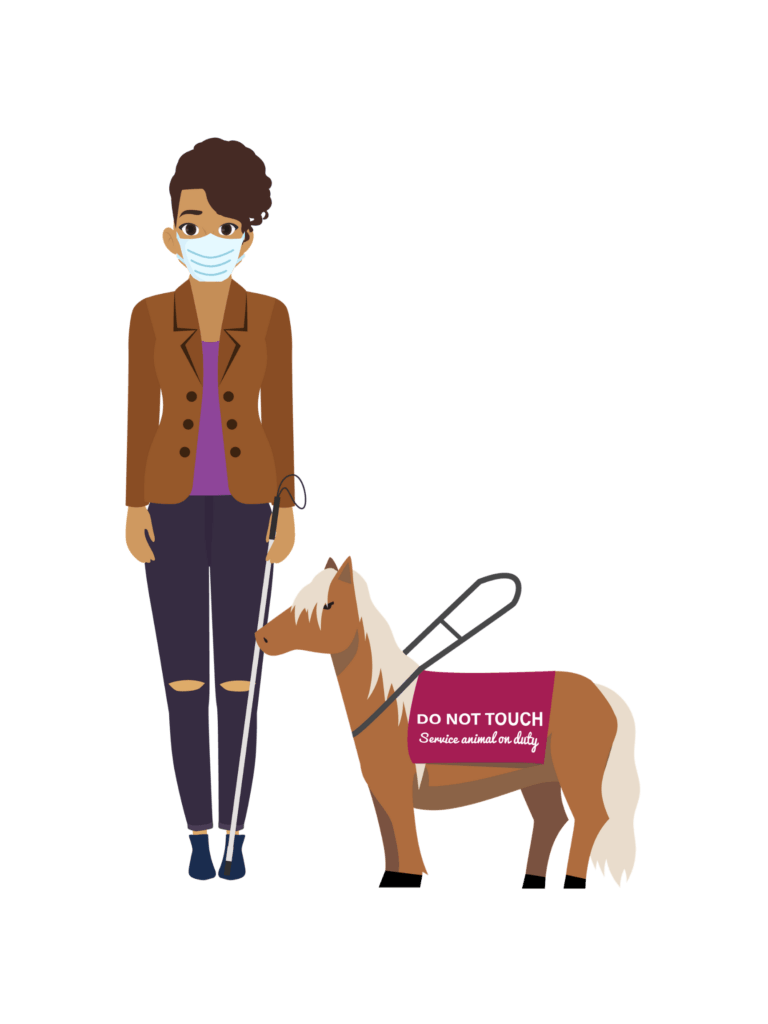
Carrie: Let’s keep walking and talking. As I was saying, some community members, local planners, and other local officials don’t understand the importance of emergency planning with and for people with disabilities.
Or they may think that it’s someone else’s job.
Prepared4ALL really means for ALL.
Oh, hi PJ and EM. I was just talking about some planners’ knowledge gaps.
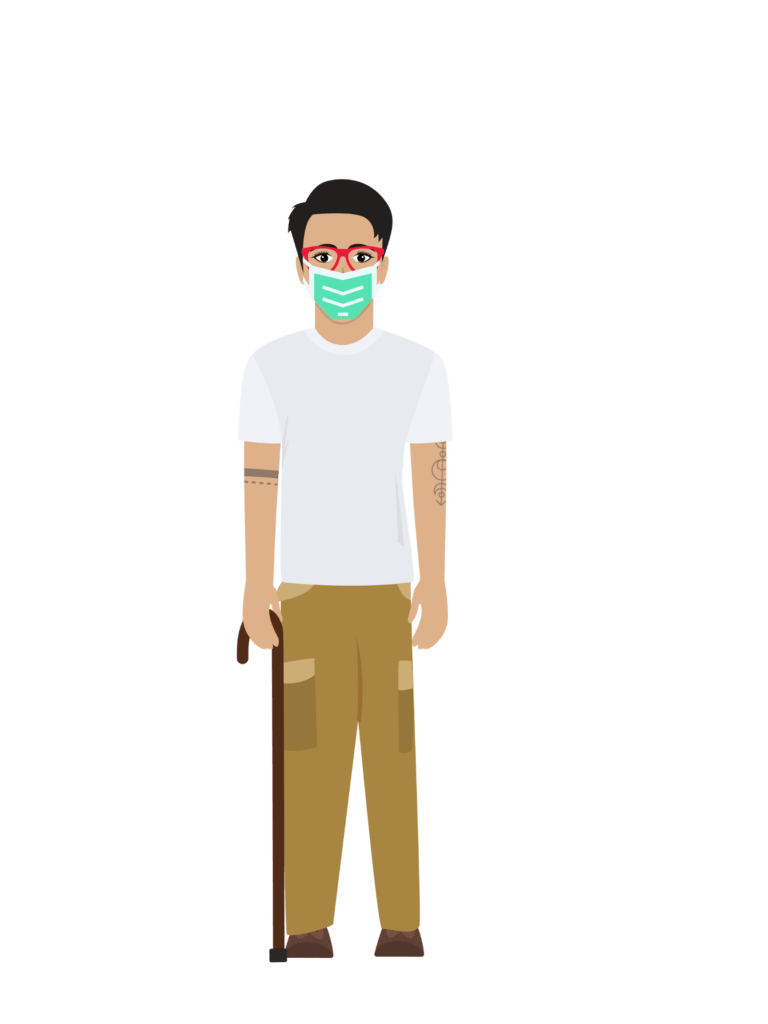
PJ: Hi, Carrie. I’ve been thinking about this a lot.
? Suppose a local emergency planner asks you why they should include people with disabilities in local emergency planning. What can you say?
PJ’s Response
Some examples of the many things you could say are:
– It’s the law to include the needs of children and adults with disabilities in local emergency plan documents. (We’ll talk about the Americans with Disabilities Act later.)
– Local plans must be 4ALL and include all community members. (We’ll talk about whole community planning on a later visit.)
– People with disabilities know and can express their own needs best. Don’t guess what local residents with disabilities need. Ask them.
– It’s best practice to include people with disabilities in the planning process and that’s part of “whole community” (inclusive) emergency planning.
– One plan for all is efficient emergency planning and response.
– It’s an opportunity to leverage local resources.
– It’s an opportunity to reach hard to reach communities.
– It’s an opportunity to seek new funding sources (like new grant possibilities).
– It’s an opportunity to gain resident buy-in for self-preparedness.
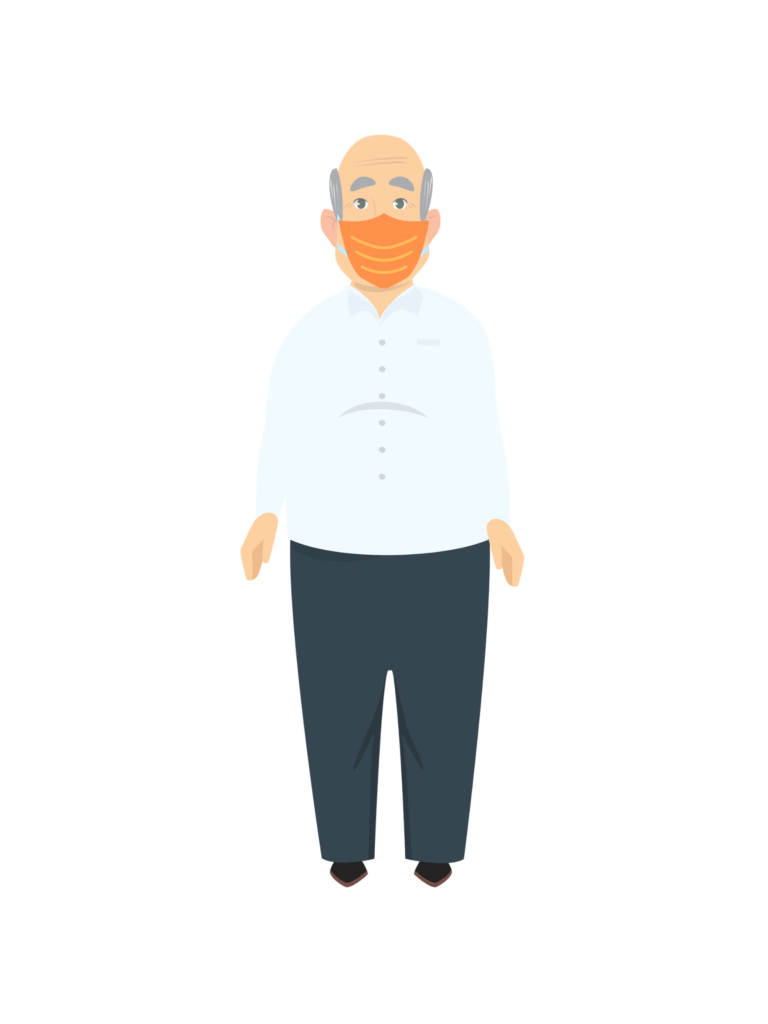
EM: If someone asks you why this matters, you could also talk about health inequity. Local emergency planning is a health issue.
As you know, people with disabilities, chronic and mental health conditions often experience health inequities. Health inequities happen when some groups don’t have the same access to opportunities and services as others. Health inequities are often avoidable and don’t always stem from the conditions themselves. In emergencies, disasters, and pandemics, existing health inequities may make things worse for people with disabilities.
People with disabilities are two to four times more likely to die or get injured in an emergency or disaster than people without disabilities. That’s another reason we need to be Prepared4ALL.
Why? Bias and lack of awareness contribute. Particularly since Hurricane Katrina in 2005, the disability community has strongly advocated for changes. It’s been tougher than you think to change people’s minds and emergency and public health preparedness systems.
Let’s talk to Cèsar about his experience.
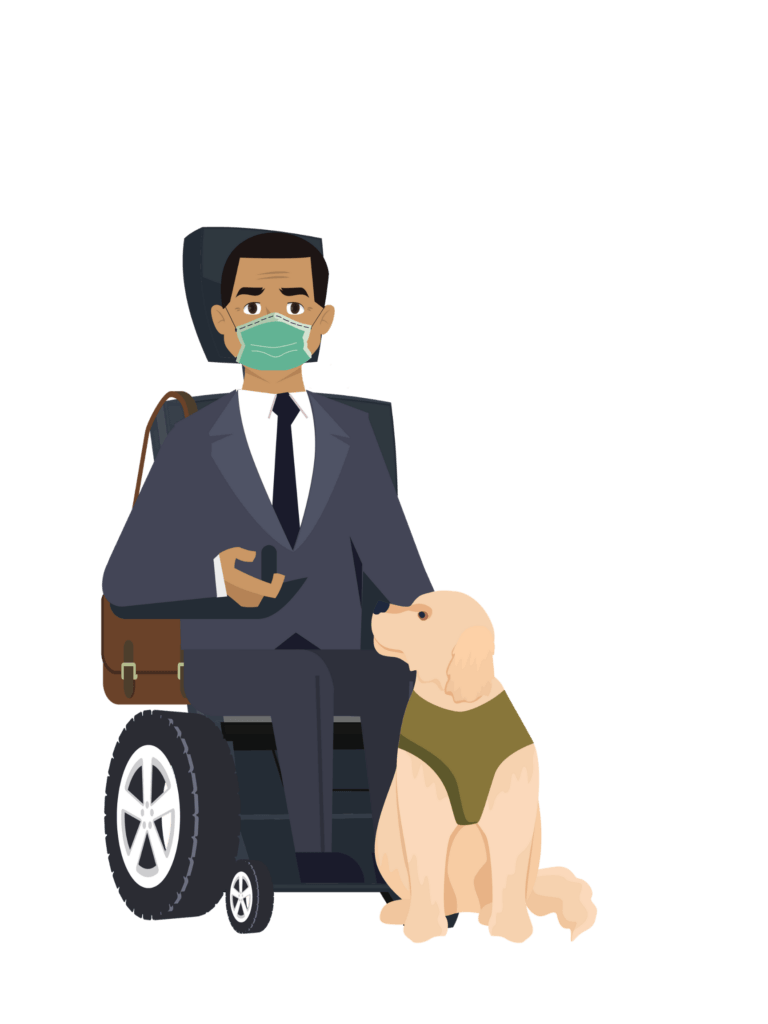
César: A few years ago, I was on vacation in Faraway County when disaster struck. I made it to the emergency shelter, but they didn’t allow my service animal, Ginger, to stay with me.
Instead, they kept her in a separate building next to the shelter. It was a policy, they told me. I could visit Ginger whenever I wanted to, but can you imagine what good it did me?
? Consider this: What good did it do César to keep Ginger in a pet shelter next to his emergency shelter? Which of the following do you agree with?
He probably lost a lot of his independence
You know how independent I am. I live alone, I ride public transit to and from work and all over the city. But in the shelter without Ginger, I couldn’t move around independently like I usually do.
Any medical conditions he had got worse
Ginger alerts me to seizures. You can imagine how that went. She helps me do things I couldn’t do myself.
He missed Ginger, but his daily life probably wasn’t affected that much
I needed a lot more help than I usually do. I was SO MAD. The shelter workers were busy and didn’t have time to help me. I had to wait an hour to get help in the bathroom!
He likely needed more help from emergency shelter workers
The shelter workers were busy and didn’t have time to help me. I was so humiliated. They better never make that mistake again. In my opinion, they violated the ADA (Americans with Disabilities Act).
? Imagine it. How do you think this impacted shelter workers?
There was little impact on shelter workers. They helped him when they could.
Not quite, try again.
There were enough shelter workers to help him when needed, even though there were delays
Not quite, try again.
This increased shelter worker responsibilities. But they just hang around most of the time unless they are registering people
Not quite, try again.
This took shelter workers away from their other duties. This took away their time
Keeping Ginger with César isn’t just the law. It isn’t just the right thing to do. It is the most efficient thing to do. Planners need to know that if Ginger had been with César, there would have been less work for them. If they had only put it in the plan….
I want you to talk to my buddy. Rafe, now you talk to them.
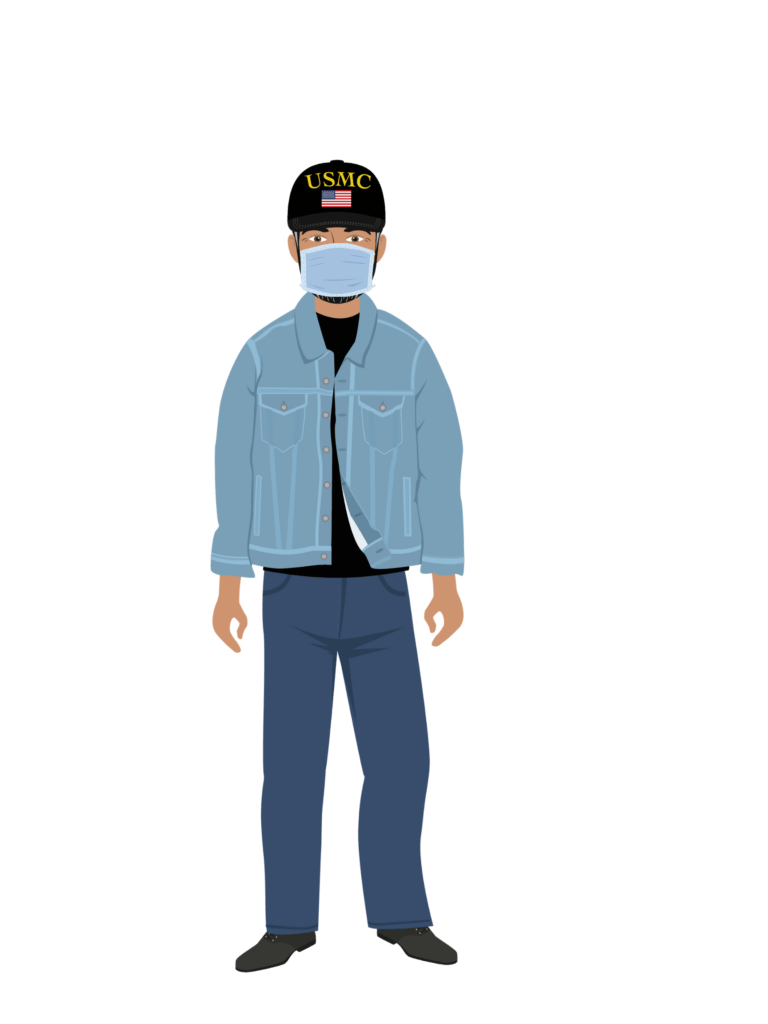
Rafe: I’m open about having PTSD (Post-Traumatic Stress Disorder). I share my life experiences in the book I’m writing on the real disaster experiences of disabled people. You heard that right.
In my book, I use identity-first language (disabled person versus the person with a disability). Carrie told me you’re going to talk about that on another visit.
I’ve heard it all about disaster experiences. I’ve heard about:
– Lengthy power outages with no access to power for ventilators or charging power wheelchairs
– Delays in accessing services and supports disabled people may need
–Lost access to health care, making health problems worse
– Putting people in nursing homes when they’d rather be in the community
– Separation from vital equipment and supports that led to lost independence, like what happened to César
– Lost access to daily routines and familiar environments that caused severe distress
– People with disabilities being sent to medical shelters when they don’t need to. This separates them from their families and natural supports, taking away their rights and increasing the stress on the local healthcare system.
Disasters and pandemics aren’t only about inequity. They mess up people’s services, resources, equipment, supports, and access to the built environment. That’s a BIG deal for people with disabilities, and planners need to know that.
Some individuals may already have existing life difficulties that may make emergencies, disasters or pandemics more challenging. Pre-existing crises may lead to these individuals having more access and functional needs
Let me show you a photo from my book. It’s from a New York emergency shelter during a disaster:
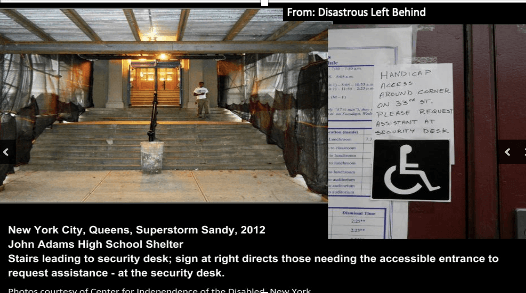
? What do you notice, Terrye?
Everything seems fine, but it’s a little dark in there
It is a bit dark. How would that impact someone’s ability to read the sign?
The directions would be hard for everyone to follow
If you look closely, you’ll see that the directions on the handwritten sign are impossible to follow if you use a wheelchair. The directions say, go to the security desk to get help with the accessible entrance. But the security desk is at the top of the stairs. Someone who uses a wheelchair couldn’t walk up the stairs to the security desk to ask for help with the accessible entrance! These oversights may seem small and unimportant, but they have real consequences. Did people using wheelchairs have to just sit there and yell up the stairs for help? Wait for someone to notice them? Did they give up and go home?
One sign is handwritten and not typed. It’s messy and hard to read
It is pretty messy and hard to read. If someone could read the sign, could they follow the directions?
The stairs seem too steep and dark to be safe
The stairs are steep. How would someone with a mobility disability find the accessible entrance?

Rafe: If you look closely, you’ll see that the directions on the handwritten sign are impossible to follow if you use a wheelchair. The directions say, go to the security desk to get help with the accessible entrance.
But the security desk is at the top of the stairs. Someone who uses a wheelchair couldn’t walk up the stairs to the security desk to ask for help with the accessible entrance!
These oversights may seem small and unimportant, but they have real consequences. Did people using wheelchairs have to just sit there and yell up the stairs for help? Wait for someone to notice them? Did they give up and go home?
Here’s another one, from inside an emergency shelter during a Central Massachusetts ice storm:
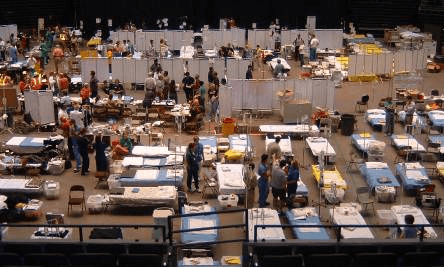
Used with permission, L. Jackson, MA Medical Reserve Corps Region 4 A
Click the quiz link below to check your learning and continue.
